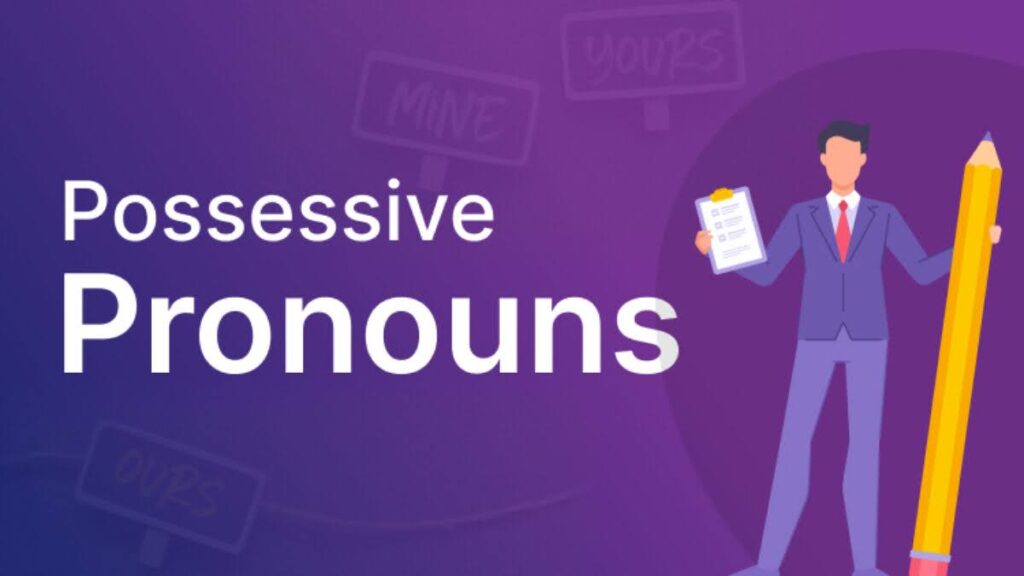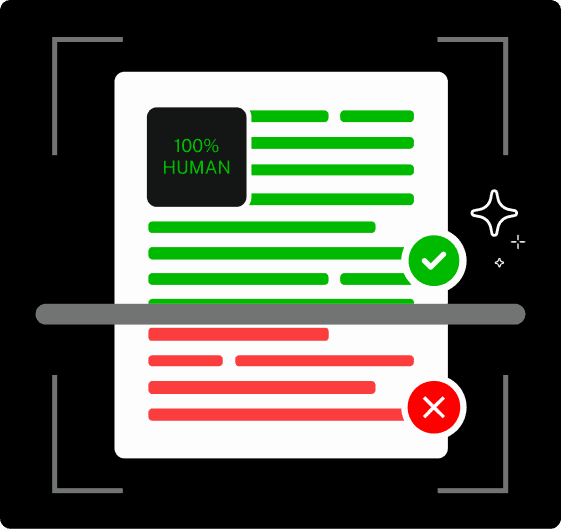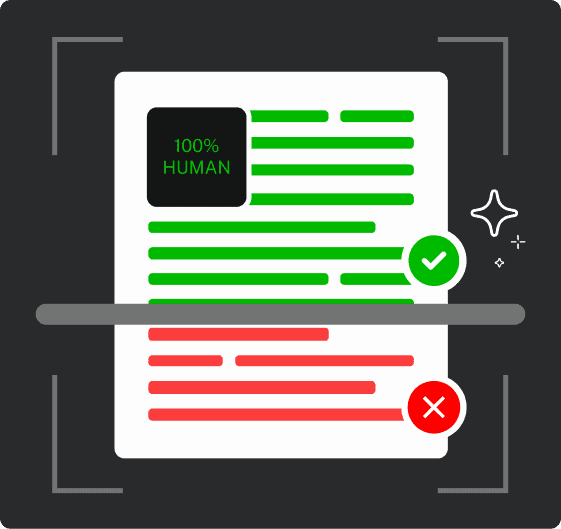Ever wondered how to say that something belongs to someone, without using his or her name to indicate as much?
This is where possessive pronouns come in.
Whether you are writing personally, a letter or an essay, to a friend or a colleague, using possessive pronouns correctly should matter to you.
In this read, we will cover anything that you need to know about them, what they are and how to use them and examples, as well as how possessive pronouns compare with possessive adjectives.
After reading this article, you’ll not only learn what a possessive pronoun is, but you’ll also feel like a pro using it in your writing and speech.
Key Takeaways
- Possessive pronouns show ownership or belonging (e.g., mine, yours, hers).
- They replace nouns to avoid repetition in a sentence.
- Possessive pronouns are different from possessive adjectives like my or your.
- “Its” is a possessive pronoun, while “it’s” means “it is.”
- Possessive pronouns are not gendered in English.
Possessive Pronouns Definition

Now on to answering the question of what is a possesive pronoun?
A possessive pronoun is a pronoun that expresses who possesses or owns something.
A possessive pronoun allows you to specify who owns a given object using only a few words, rather than using the same object or person’s name twice with respect to the subject of the object.


Never Worry About AI Detecting Your Texts Again. Undetectable AI Can Help You:
- Make your AI assisted writing appear human-like.
- Bypass all major AI detection tools with just one click.
- Use AI safely and confidently in school and work.
For example, if we’re contemplating Sarah and her book. Rather than refering to her book and saying, “That book is Sarah’s”, you could just say, “That book is hers”.
The word hers replaces both the noun (Sarah) and the object she owns (book), yet it still tells us exactly who it belongs to.
That’s the role of a possessive pronoun: it replaces a full noun phrase to avoid unnecessary repetition while speaking.
In English, possessive pronouns are used in both spoken and written language to indicate that something belongs to a person, group, or thing.
These words stand on their own and are not followed by a noun, which sets them apart from possessive adjectives (like my, your, his, her, etc.).
While possessive adjectives describe a noun (e.g., my phone), possessive pronouns replace the noun entirely (e.g., That phone is mine).
What is a possessive pronoun examples? Let’s find out below:
- This jacket is mine.
- That car is theirs.
- The final decision is yours.
In each sentence, the possessive pronoun (mine, theirs, yours) replaces a longer phrase and still makes it clear who owns what.
This is especially useful when you want your writing or speech to sound more natural, smooth, and less repetitive.
By using possessive pronouns correctly, you not only avoid redundancy but also improve the flow and clarity of your communication.
Difference Between Possessive Adjectives and Pronouns
It’s easy to confuse possessive adjectives and possessive pronouns; after all, they both show ownership.
However, they serve different roles in a sentence, and understanding the difference is essential for writing with clarity and confidence.
Possessive adjectives come before a noun and describe who owns something. They always need to be followed by a noun.
Examples include my, your, his, her, its, our, and their.
Possessive pronouns, on the other hand, replace the noun entirely.
They stand on their own without needing to be followed by the noun they refer to. Examples include mine, yours, his, hers, ours, and theirs.
| Possessive Adjective | Possessive Pronoun |
| This is my pen | The pen is mine |
| That is her seat | That seat is hers |
| It is our house | The house is ours |
Notice how the possessive adjectives are always placed directly in front of a noun (pen, seat, turn), while the possessive pronouns replace the noun entirely and can stand alone.
If you’re ever unsure whether to use a possessive adjective or pronoun, try this trick: Does the word need a noun after it? If yes, it’s a possessive adjective. If not, it’s a possessive pronoun.
List of Possessive Pronouns in English
English has a set of specific pronouns used to show ownership, and they’re commonly used in both writing and speech.
These possessive pronouns replace noun phrases and help avoid repetition while keeping your sentences clear and concise.
Here’s a complete list of possessive pronouns in English:
- Mine – belongs to me
- Yours – belongs to you
- His – belongs to him
- Hers – belongs to her
- Ours – belongs to us
- Theirs – belongs to them
- Its – belongs to it (used without an apostrophe)
It’s important to note that “its” (the possessive form) is often confused with “it’s,” which is a contraction of it is.
This is one of the most common mistakes in English, so pay close attention when using or writing it.
Because these terms can easily get mixed up, especially when comparing them to possessive adjectives like my or your, you can use our Undetectable AI’s Ask AI tool to help clarify confusing distinctions.
It’s especially helpful for students or language learners who want extra practice understanding the role and placement of each term in real sentences.

How to Use Possessive Pronouns in Sentences
Possessive pronouns are used to replace a noun phrase that shows ownership, and they make sentences smoother by avoiding repetition.
They mostly appear after a verb or a preposition, and never directly before a noun (that’s the job of possessive adjectives).
- To show ownership without repeating the noun:
That seat is hers.
(Instead of: That seat is her seat.)
This scarf is mine.
(Instead of: This scarf is my scarf.)
- To compare ownership:
My phone is newer than yours.
Their plan was similar to ours. - To emphasize possession in questions or responses:
Whose laptop is this? – It’s his.
Is that notebook yours or theirs?
- After prepositions:
I’ll sit next to hers during the meeting.
The responsibility is on theirs to follow through.
In case you have tried using pronouns to replace nouns and your speech or writing doesn’t sound just right to you, we are here to help.
You can make use of our Undetectable AI’s AI Grammar Checker, which will make sure none of your grammatical errors go undetected.
This tool will not only point out your errors but will also resolve and restructure your sentence accurately to ensure your thoughts are communicated properly.

Possessive Pronouns vs. Other Pronouns
Possessive pronouns are just one category among many types of pronouns in English.
To use them correctly, it is important that we know how to differentiate them properly.
Visual Comparison in Real Sentences
Find below a table showing a visual comparison of the different types of pronouns, their examples, and how they can be used accurately in a sentence.
We made this table available in order to help your understanding of this concept.
| Pronoun Type | Pronoun Example | Sentence Example |
| Possessive Pronoun | Mine, yours, theirs | That workspace is theirs, not ours. |
| Personal Pronoun | I, He, They | They submitted their proposal yesterday. |
| Object Pronoun | Me, Her, Us | The manager called her to clarify the report. |
| Possessive Adjective | My, Your, Their | My computer is undergoing maintenance. |
| Reflexive Pronouns | Myself, Herself, Themselves | She taught herself how to use the computer. |
| Demonstrative Pronoun | This, those | Those are the shoes she bought. |
| Relative Pronoun | Who, which, that | The girl who killed the cat is here. |
Examples of Possessive Pronouns in Context

To master the use of possessive pronouns, it’s important to see how they operate naturally in everyday and professional communication.
Possessive pronouns not only show ownership but also help make sentences more concise and avoid unnecessary repetition.
Here are some clear examples of possessive pronouns used in real-life sentence scenarios.
Each example is followed by a brief explanation to help you better understand how they work in context:
- Example: That phone is mine.
Explanation: The pronoun mine shows that the speaker owns the phone. Notice how it replaces the noun phrase “my phone” entirely. - Example: Their presentation was stronger than ours.
Explanation: Ours refers back to “our presentation” and avoids repeating the noun. It efficiently communicates the comparison between two owned items. - Example: Is this umbrella yours or hers?
Explanation: This question uses yours and hers to ask about ownership without restating “your umbrella” or “her umbrella.” - Example: I couldn’t find my keys, but she had hers.
Explanation: Hers takes the place of “her keys.” This keeps the sentence smoother and more natural. - Example: These seats are ours; the others are theirs.
Explanation: Both ours and theirs are possessive pronouns used to indicate which seats belong to whom, without repeating “our seats” or “their seats.” - Example: Its color has faded over time.
Explanation: “Its” is often tricky because it can be confused with “it’s” (a contraction for it is). Here, its shows possession, describing that the object owns a characteristic (its color).
Having gone through the explanations and examples we have provided, we know without a doubt that you have fully understood the concept of possessive pronouns.
What they are, how to identify them and how to use them accurately in speaking or writing.
Explore our AI Detector and Humanizer effortlessly in the widget below!
FAQs About Possessive Pronouns
Can You Use a Possessive Pronoun as a Subject?
No, possessive pronouns are not subjects themselves; they replace a noun phrase that includes both a subject and possession.
For example, in the sentence “This laptop is mine,” the subject is “this laptop”, mine merely tells us who it belongs to.
So, while possessive pronouns can stand alone, they function more as possessive complements, not grammatical subjects.
Is “Theirs” Always Plural?
Yes, theirs is always plural. It is used when referring to something owned by more than one person or entity.
For instance: “Those books are theirs.” If you’re referring to something owned by a single person, you would use his, hers, or its, depending on the gender or context.
Unlike his and hers, theirs always implies plural ownership.
What’s the Rule for “Its” vs. “It’s”?
This is one of the most common grammar pitfalls. The word its (without the apostrophe) is a possessive pronoun, meaning belonging to it. e.g “The dog wagged its tail.”
On the other hand, it’s (with an apostrophe) is a contraction for “it is” or “it has.” e.g, “It’s going to rain later.”
A good way to remember the difference is to mentally expand it’s to “it is”, if the sentence still makes sense, the contraction is correct.
Are Possessive Pronouns Gendered?
Some are, and some aren’t.
Pronouns like his and hers are gendered, they indicate the gender of the person who owns something. Others, like mine, ours, yours, theirs, and its, are gender-neutral.
When you’re unsure or aiming for inclusivity in writing, using gender-neutral possessive pronouns like theirs or yours can help avoid assumptions about identity.
Final Thoughts
Understanding what is a possessive case pronoun and how to use it correctly can significantly improve your writing by making it more concise, natural, and reader-friendly.
These small but powerful words allow you to express ownership without repeating nouns, helping your sentences flow with ease and precision.
As we’ve explored, knowing the difference between possessive pronouns and adjectives, recognizing the full list of English possessive forms, and applying them correctly in real sentences are all key steps in mastering this part of grammar.
Whether you’re writing academic content, business communication, or just everyday messages, using possessive pronouns properly can elevate the clarity of your ideas.
Remember, if you’re ever in doubt about placement or agreement, our Undetectable AI’s AI Grammar Checker is always available to help you validate your usage and strengthen your writing.
And for those tricky distinctions, like “its” vs. “it’s” or “hers” vs. “her” you can always turn to tools like Ask AI to get clear explanations or run quick grammar checks.
Mastering pronouns doesn’t just make your grammar better, it makes your entire communication sharper.
Now that you know how possessive pronouns work, go ahead and put them into practice. The more you use them, the more natural they’ll become.
For smarter, more natural writing, try Undetectable AI.
